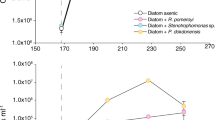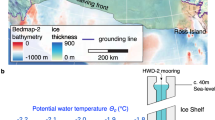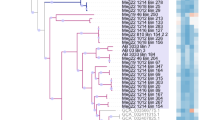Abstract
Cells maintain an osmotic pressure essential for growth and division, using organic compatible solutes and inorganic ions. Mg2+, which is the most abundant divalent cation in living cells, has not been considered an osmotically important solute. Here we show that under carbon limitation or dormancy native marine bacterial communities have a high cellular concentration of Mg2+ (370–940 mM) and a low cellular concentration of Na+ (50–170 mM). With input of organic carbon, the average cellular concentration of Mg2+ decreased 6–12-fold, whereas that of Na+ increased ca 3–4-fold. The concentration of chlorine, which was in the range of 330–1200 mM, and was the only inorganic counterion of quantitative significance, balanced and followed changes in the concentration of Mg2++Na+. In an osmotically stable environment, like seawater, any major shift in bacterial osmolyte composition should be related to shifts in growth conditions, and replacing organic compatible solutes with inorganic solutes is presumably a favorable strategy when growing in carbon-limited condition. A high concentration of Mg2+ in cells may also serve to protect and stabilize macromolecules during periods of non-growth and dormancy. Our results suggest that Mg2+ has a major role as osmolyte in marine bacteria, and that the [Mg2+]/[Na+] ratio is related to its physiological condition and nutritional status. Bacterial degradation is a main sink for dissolved organic carbon in the ocean, and understanding the mechanisms limiting bacterial activity is therefore essential for understanding the oceanic C-cycle. The [Mg2+]/[Na+]-ratio in cells may provide a physiological proxy for the transitions between C-limited and mineral nutrient-limited bacterial growth in the ocean's surface layer.
Similar content being viewed by others
Log in or create a free account to read this content
Gain free access to this article, as well as selected content from this journal and more on nature.com
or
References
Csonka LN . (1989). Physiological and genetic responses of bacteria to osmotic stress. Microbiol Rev 53: 121–147.
Dinnbier U, Limpinsel E, Schmid R, Bakker EP . (1988). Transient accumulation of potassium glutamate and its replacement by trehalose during adaptation of growing cells of Escherichia coli K-12 to elevated sodium chloride concentrations. Arch Mikrobiol 150: 348–357.
Fagerbakke KM, Norland S, Heldal M . (1999). The inorganic ion content of native aquatic bacteria. Can J Microbiol 45: 304–311.
Giovannoni SJ, Britschgi TB, Moyer CL, Field K . (1990). Genetic diversity in Sargasso Sea bacterioplankton. Nature 345: 60–63.
Gouffi K, Blanco C . (2000). Is the accumulation of osmoprotectant the unique mechanism involved in bacterial osmoprotection? Int J of Food Microbiol 55: 171–174.
Heldal M, Norland S, Tumyr O . (1985). A method for measurement of dry matter and elemental content of individual bacteria using X-ray microanalysis. App Environ Microbiol 50: 1251–1257.
Karl D, Laws EA, Morris P, Williams PJ leB, Emerson S . (2003). Metabolic balance of the open sea. Nature 426: 32.
Kirchman DL, Rich JH . (1997). Regulation of bacterial growth rates by dissolved organic carbon and temperature in the equatorial Pacific Ocean. Microb Ecol 33: 11–20.
Lane DJ, Pace B, Olsen GJ, Stahl DA, Sogin ML, Pace NR . (1985). Rapid determination of 16S ribosomal RNA sequences for phylogenetic analyses. Proc Natl Acad Sci USA 82: 6955–6959.
Larsen A, Castberg T, Sandaa R-A, Brussaard CDP, Egge JK, Heldal M et al. (2001). Population dynamics and diversity of phytoplankton bacteria and virus in a seawater enclosure. Mar Ecol Progr Ser 221: 47–57.
Lennon JT, Jones SE . (2011). Microbial seed banks: the ecological and evolutionary implications of dormancy. Nat Rev Microb 19: 119–130.
Marie D, Brussard CPD, Thyrhaug R, Bratbak G, Vaulot D . (1999). Enumeration of marine viruses in culture and natural samples by flow cytometry. Appl Environ Microbiol 65: 45–52.
Martin DD, Ciulla RA, Roberts MF . (1999). Osmoadaptation in archaea. App Env Microbiol 65: 1815–1825.
Moncrief MBC, Maguire ME . (1999). Magnesium transport in prokaryotes. J Biol Inorg Chem 4: 523–527.
Norland S, Fagerbakke KM, Heldal M . (1995). Light element analysis individual of bacteria by X-ray microanalysis. App Environ Microbiol 61: 1357–1362.
Oh S, Kogure K, Ohwada K, Simidu U . (1991). Correlation between possession of a respiratory-dependent Na+ pump and Na+ requirement for growth of marine bacteria. App Environ Microbiol 57: 1844–1846.
Rivkin RB, Anderson MR . (1997). Inorganic nutrient limitation of oceanic bacterioplankton. Limnol Oceanogr 42: 730–740.
Roessler M, Müller V . (2001). Osmoadaptation in bacteria and archaea: common principles and differences. Environ Microbiol 3: 743–754.
Sandaa R-A, Magnesen T, Torkildsen L, Bergh Ø . (2003). Characterisation of bacterial communities associated with early life stages of cultured Great Scallop Pecten maximus using denaturing gradient gel electrophoresis (DGGE). Syst Appl Microbiol 26: 302–311.
Smith RL, Maguire ME . (1998). Microbial magnesium transport: unusual transporters searching for identity. Mol Microbiol 28: 217–226.
Stendig-Lindberg G . (2001). Congress points. The Israel society for research on magnesium in biology and medicine: proceedings of the first meeting. IMAJ 3: 783–786.
Thingstad TF, Hagstrom Å, Rassoulzadegan F . (1997). Accumulation of degradable DOC in surface waters: is it caused by a malfunctioning microbial loop? Limnol Oceanogr 42: 398–404.
Thingstad TF, Zweifel UL, Rassoulzadegan F . (1998). P limitation of heterotrophic bacteria and phytoplankton in the northwest Mediterranean. Limnol Oceanogr 43: 88–94.
Tortell PD, Maldonado MT, Price NM . (1996). The role of heterotrophic bacteria in iron-limited ocean ecosystems. Nature 383: 330–332.
Tuomi P, Fagerbakke KM, Bratbak G, Heldal M . (1995). Nutritional enrichment of a microbial community: the effects on activity elemental composition community structure and virus production. FEMS Microbiol Ecol 16: 123–134.
Van Wambeke F, Christaki U, Giannokourou A, Moutin T, Souvemerzoglou K . (2002). Longitudinal and vertical trends of bacterial limitation by phosphorus and carbon in the Mediterranean Sea. Microb Ecol 43: 119–133.
Williams PJ leB . (1995). Evidence for the seasonal accumulation of carbon-rich dissolved organic material its scale in comparison with changes in particulate material and the consequential effect on net C/N assimilation ratios. Mar Chem 51: 17–29.
Acknowledgements
We would particularly like to acknowledge Dr Jorun Egge, Department of Biology, University of Bergen, for her contribution by sampling and fluorescence measurements. We also acknowledge Lise Øvreås for her cooperation in these studies through the EU-project MIRACLE. This work was financed by the Research Council of Norway through the project 184860/S30 ‘MERCLIM’ and the European Research Council Advanced Grant project no. 250254 ‘MINOS’.
Author information
Authors and Affiliations
Corresponding author
Additional information
Supplementary Information accompanies the paper on The ISME Journal website
Supplementary information
Rights and permissions
About this article
Cite this article
Heldal, M., Norland, S., Erichsen, E. et al. Mg2+ as an indicator of nutritional status in marine bacteria. ISME J 6, 524–530 (2012). https://doi.org/10.1038/ismej.2011.130
Received:
Revised:
Accepted:
Published:
Issue date:
DOI: https://doi.org/10.1038/ismej.2011.130
Keywords
This article is cited by
-
The importance of microbiota and terrestrial inflows in controlling seston C:N:P:O:Si:Ca:Mn:Mg:Fe:K:Na:Cl:S:Cu:Zn stoichiometry of a deep coastal fjord
Biogeochemistry (2023)
-
The crystal structure of methanol dehydrogenase, a quinoprotein from the marine methylotrophic bacterium Methylophaga aminisulfidivorans MPT
Journal of Microbiology (2018)
-
The Inhibitory Effects of Cu2+ on Exopalaemon carinicauda Arginine Kinase via Inhibition Kinetics and Molecular Dynamics Simulations
Applied Biochemistry and Biotechnology (2015)



